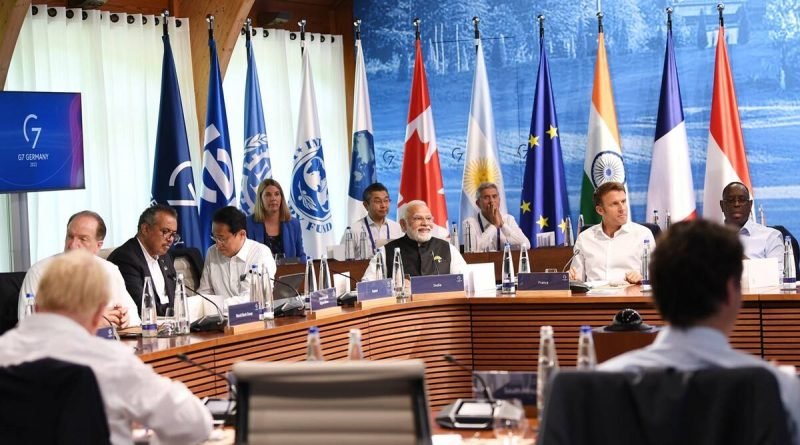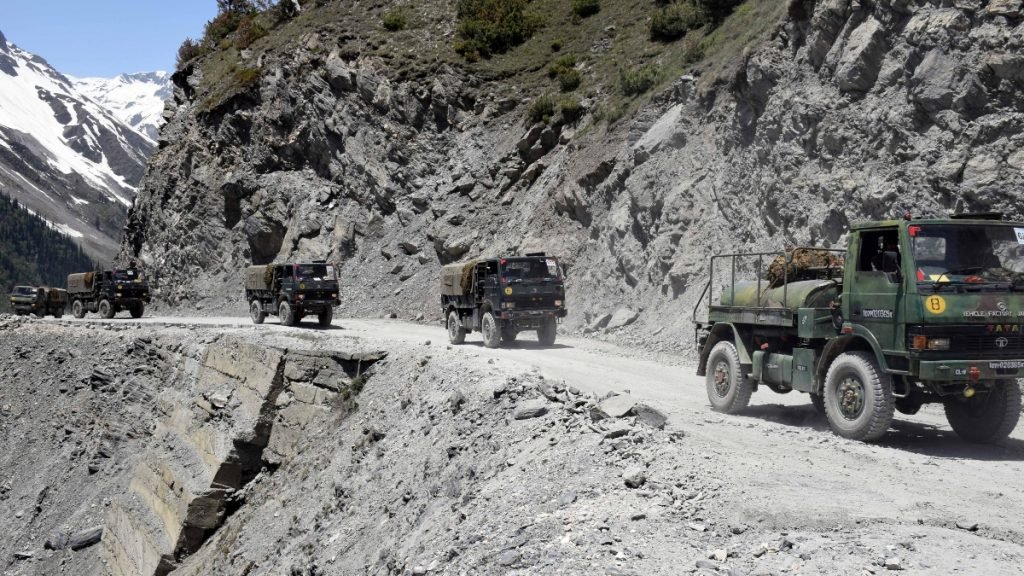The ascendancy of India at the global stage

Over the last 25 years, India’s explosive economic growth has vaulted it into the ranks of the world’s emerging major powers. Long plagued by endemic poverty, until the 1990s the Indian economy was also hamstrung by a burdensome regulatory regime that limited its ability to compete on a global scale. Since then, however, the Indian government has gradually opened up the economy and the results have been stunning. India’s middle class has grown by leaps and bounds, and the country’s sheer scale-its huge population and $2 trillion economy-means its actions will have a major global impact. From world trade to climate change to democratisation, India now matters.
The very ascendancy of India on the global stage can be reiterated in the BJP manifesto of 2014 which read ‘the Indian foreign policy would strive to improve ties with key states to aid economic development and enhance its global standing while bolstering its security interests’. Few Indian prime ministers—with the clear exception of the first, Jawaharlal Nehru—have prompted as intense and sustained a debate about their foreign policy as Narendra Modi. In part, this is due to the energy he and his Bharatiya Janata Party-led government brought to the conduct of international relations after their first landslide win in the May 2014 general election. The ‘Modi government’s foreign policy has been transformative’, and Modi has established himself as both ‘a world leader’ and a ‘policy entrepreneur’. Since assuming office in 2014, Prime Minister Narendra Modi has turned India into a strategic player with a highly effective foreign policy. Modi has done this by shifting New Delhi away from its old strategy of strict nonalignment, paving the way for stronger ties with great and middle-sized powers. Under his watch, India has embraced the United States and its Indo-Pacific strategy in an effort to balance a rising China and keep the region open and free from coercion.

Modi has also successfully faced down his country’s archrivals, Pakistan and China. In 2020, Modi instructed the Indian Army to stand its ground amid lethal border clashes with China, and India even regained some lost territory. In 2019, after a Pakistan-based terrorist group’s attack in the erstwhile state of Jammu and Kashmir, India retaliated in a measured fashion—demonstrating resolve while preventing escalation. Notably, there have been no major terrorist attacks involving Pakistan-based groups since the incident. Building on these successes, however, may prove difficult for Modi. Pakistan and China have strengthened their cooperation. New challenges are emerging from the security vacuum Washington left behind in Afghanistan. Other fires to put out include a rapidly drifting Indo-Russian relationship and the military coup in neighbouring Myanmar that has drawn that country’s regime closer to Beijing.
As the world found itself in the throes of the coronavirus outbreak, India leveraged its prowess in vaccine manufacturing, developing its own vaccine in record time and rapidly scaling its capacities to manufacture vaccines developed by western organisations. As a part of its foreign diplomacy and its commitment to humanity, India exported 65 million doses of COVID-19 vaccines to more than 100 countries across the globe, which earned it the moniker of the “Pharmacy of the world.” India, under PM Modi, has also been aggressively pursuing challenges posed by Climate Change. PM Modi pledged to cut the country’s emissions to net-zero by 2070, an ambitious target for a developing country like India where fossil fuels are still the primary source of energy. However, nothing exemplifies India’s marked change in its foreign policy after 2014 than the recent picture from Tokyo that took the internet by storm. Prior to 2014, India was considered a reluctant regional power that was let down by its corrupt and byzantine governance model. But after 2014, the world has grown to admire and come to recognise inherent potential India possessed. In the viral image, PM Modi was seen leading a group of global leaders, including the US president Joe Biden, Australia PM Anthony Albanese and a retinue of diplomats accompanying them, underscoring the country’s growing influence and stature across the world.
One of the cornerstones of the Modi government’s foreign policy has been its zero tolerance for terrorism emanating from neighbouring countries, particularly Pakistan. The Indian government, under the leadership of PM Modi, has called out Pakistan’s nuclear bluff on more than one occasion, sending a clear message to Islamabad and Rawalpindi, the two power centres of the dysfunctional country, that India will not be as accommodating to terror attacks as it had been during the UPA years. Under the leadership of PM Modi, India has grown to assert its territorial integrity in the face of mounting Chinese aggression. While the previous governments did little to protect India’s border areas from China’s salami-slicing, Beijing could no longer continue its evil plans of discreetly expanding its frontiers without facing tough resistance from India. The end of the Doklam standoff heralded possibly one of India’s most spectacular diplomatic victories in decades, looking the Chinese in the eye and standing up to their expansionist designs. Believing India would have no appetite for a border confrontation amidst the pandemic, the Chinese PLA attempted to clandestinely expand its presence in the border areas and stake a claim on Indian territories. However, the Indian armed forces resisted China’s salami-slicing tactics, touching off a stand-off between the armies of the two countries.
India has maintained a measured silence on Russia’s war in Ukraine, placing self-interest above the desire to seek validation from the West. While it has attracted the wrath of virtue-signalling leftists and hypocritical western commentators, who feel outraged that India’s foreign policy has not aligned with the West in confronting Russia, India’s strategic ambiguity over the issue has ensured that it has not antagonised Russia, one of its oldest and most-reliable defence partners. Until recently, India bought almost all its frontline arms from Moscow. India’s major weapons are overwhelmingly — about 85% — of Russian origin.

Despite the west’s sanctions against Russia, India bought more than twice as much crude oil from Russia since it invaded Ukraine as it did in 2021 as New Delhi snapped up discounted Russian oil to fulfil its energy requirements. With inflationary pressures looming and the fuel prices hitting record-high, it was an astute move on the Modi government’s part to disregard the western diktats and buy Russian oil available at discounted rates. With its refusal to toe the western line in the Russia-Ukraine crisis and embrace neutrality, India demonstrated that its foreign policy is rooted in the country’s self-interest and not in abiding by the hypocritical standards of morality preached by the West.
India’s penchant for practising strategic autonomy is steeped in its history of international relations, and in its geography that puts a premium on maintaining independent agency, even at the cost of being called a benchwarmer. India, despite being the most preeminent country in South Asia, has to deal with a neighbourhood with two hostile nuclear powers: China and Pakistan. Moreover, the continental and maritime environment in South Asia has seen unmistakable Chinese footprints in the security and economic realms. In such a milieu, Delhi finds it prudent to condemn the violence and loss of lives because of Russia’s invasion of Ukraine while avoiding directly joining the West in calling out Russia’s behaviour on international platforms. The realpolitik playbook guides Delhi to keep its distance from a conflict that has deep historical and geopolitical roots in the unfinished business of post-Cold War European security order and the continuing face-off between NATO’s eastward drive and Russia’s insecurity.
No doubt, India’s foreign policy is at crossroads, in view of its growing ties with the West, and its own conception of dealing with inherent security threat perceptions in its immediate and extended neighbourhood. Going by the popular adage, India is indeed living in “interesting times.” There are a number of future scenarios that could unfold, setting forth a new geometry in India’s foreign policy. India’s response to the Ukraine crisis and the ensuing geopolitical fissures have unfolded a divided debate on the direction of India’s foreign policy. Will India, after testing the grounds of engagement with the West come full circle back to a newer version of non-alignment? Despite some hiccups in the tilt to the West, will India, given the mounting China challenge, stick to its commitments to the Quad and its strategic permutations and combinations? Alternatively, will the current geopolitical churning, and louder calls for choosing sides in the international system, lead to a new offspring of understanding in the triangular formation of Russia, India, and China?


















